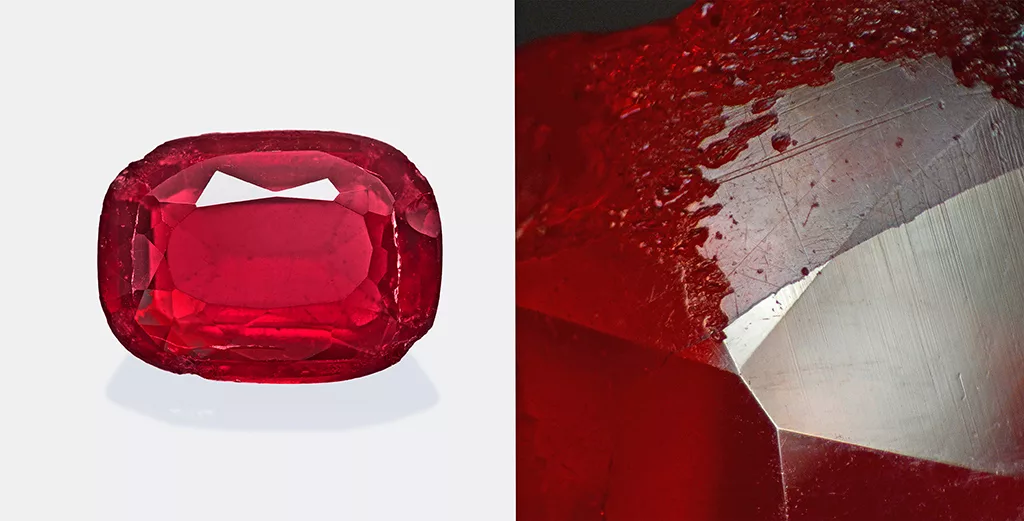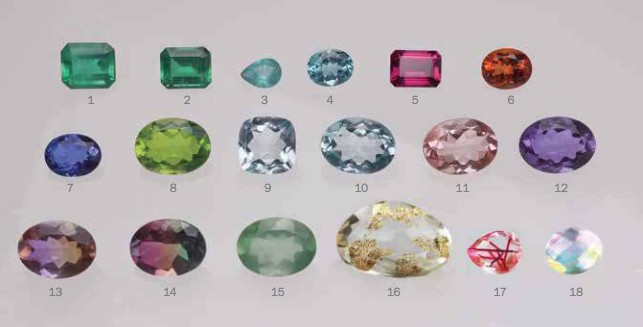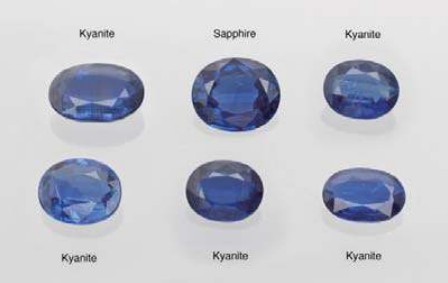
Souvenirs from the past: doublets uncovered at SSEF
first published in Facette 27 (June 2021)

From time to time, we get a flashback in gemmological history. This is specifically the case when we receive an antique ring with an ‘early’ Verneuil synthetic ruby showing strongly curved growth bands, or, as in the past few months, when clients submit us doublets. Doublets are manufactured stones which are made to imitate precious gemstones, at least for the unexperienced observer.
Garnet-topped doublet
The first case was a beautiful and classic red ruby, at least considered as such by the client who submitted it to SSEF. Our testing however quickly revealed already by a visual check another classic: a so-called garnet-topped doublet. These doublets consist of a small and thin chip of garnet (usually of the pyrope-almandine series), fused together with a much bigger coloured glass base, which in fact is responsible for nearly all of the colour of the stone. Characteristic features are a strong lustre difference between the small high-reflective garnet and the low-RI glass. As the garnet chip is a fractured fragment, the fused intersection between the glass base and the garnet top is not a straight plane but rather conchoidal, and furthermore not in the girdle plane but found just somewhere below the table facet. Our red stone showed exactly all these features (see Figure 1). In addition, we could observe some oriented rutile needles in the garnet top, and small to larger air bubbles in the glass and specifically at the intersection where these two materials had been fused together.
Advanced testing including Raman spectroscopy well confirmed our visual and microscopic observations.
As far as for us gemmologists, this rare encounter proved to be a very nice and interesting specimen.
‘Soudé emerald’doublet
The second case was a pretty necklace with three emeralds set together with small diamonds, at least at first sight (Figure 2). It all took a bad turn when we had a closer look to the item. No, the small stones were not diamonds but actually a mix of cubic zirconia and colourless glass. And the three green stones were not natural emeralds but proved to be manufactured products, historically known in the trade as ‘Soudé-emerald’ doublets. These doublets are made using two pieces of colourless beryl (for the crown and the pavilion) joined together by a green glue. Under the microscope, the green glue between the two colourless parts was readily observed along the girdle (Figure 2). As it is well-documented for such doublets, numerous flat air bubbles were found in the green layer of glue. In addition, the glue showed already some features of ageing and drying out towards the edges of the stone. The colourless parts of the doublet contained many tiny and parallel hollow channels and some elongated fluid inclusions, characteristic for natural beryl. Advanced testing with EDXRF and Raman confirmed the conclusion of this unusual necklace containing rather classic imitations of emerald and diamond.



